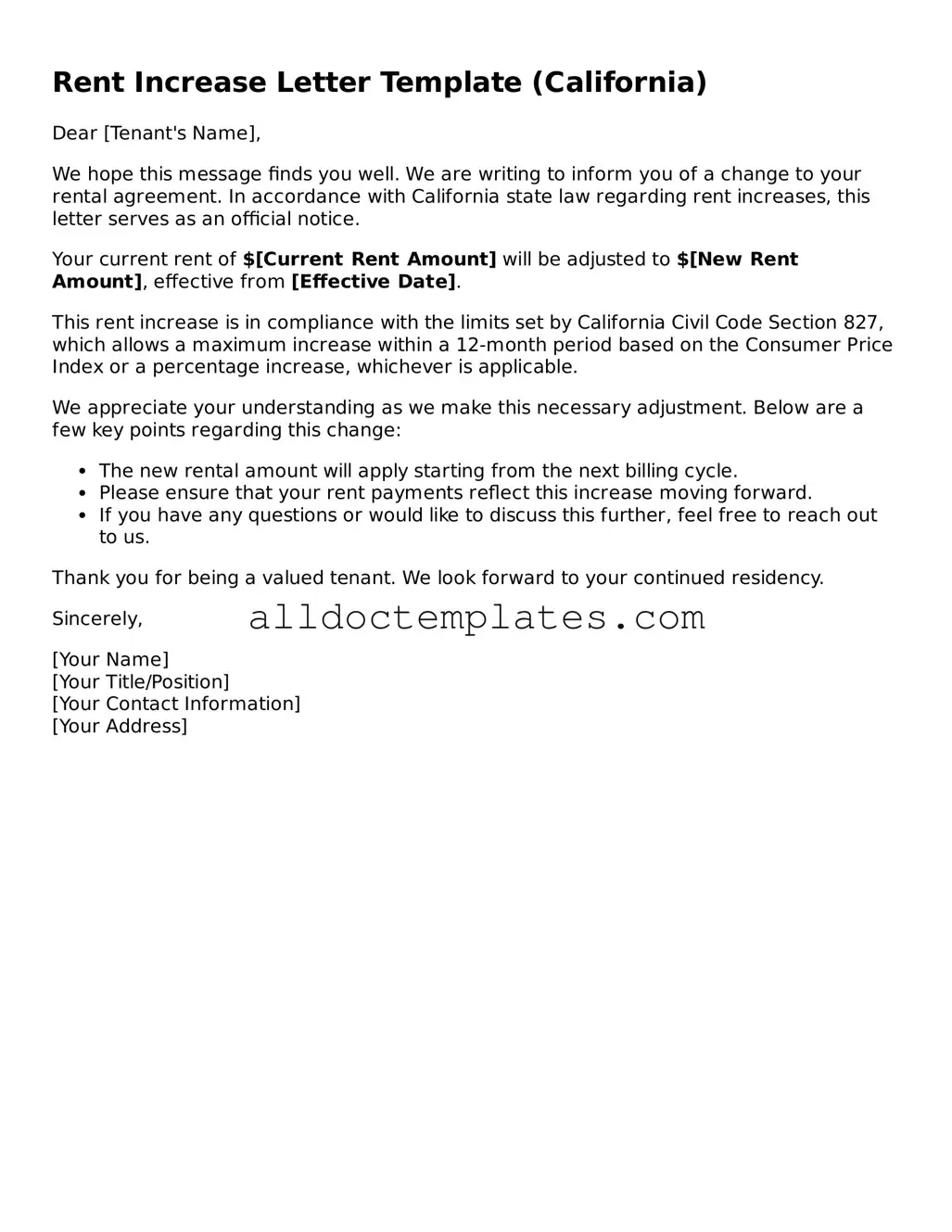Rent Increase Letter Template (California)
Dear [Tenant's Name],
We hope this message finds you well. We are writing to inform you of a change to your rental agreement. In accordance with California state law regarding rent increases, this letter serves as an official notice.
Your current rent of $[Current Rent Amount] will be adjusted to $[New Rent Amount], effective from [Effective Date].
This rent increase is in compliance with the limits set by California Civil Code Section 827, which allows a maximum increase within a 12-month period based on the Consumer Price Index or a percentage increase, whichever is applicable.
We appreciate your understanding as we make this necessary adjustment. Below are a few key points regarding this change:
- The new rental amount will apply starting from the next billing cycle.
- Please ensure that your rent payments reflect this increase moving forward.
- If you have any questions or would like to discuss this further, feel free to reach out to us.
Thank you for being a valued tenant. We look forward to your continued residency.
Sincerely,
[Your Name]
[Your Title/Position]
[Your Contact Information]
[Your Address]
